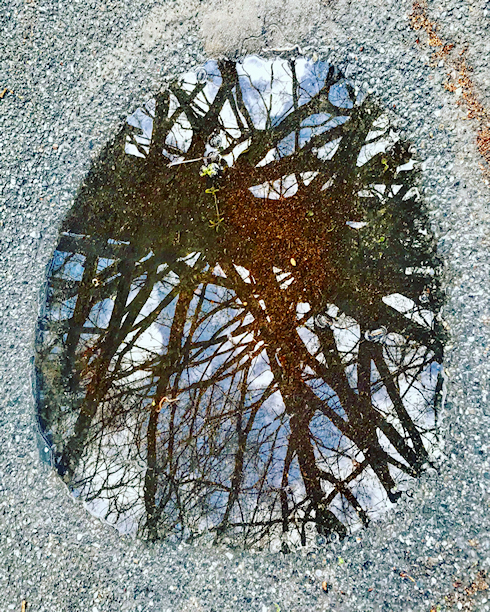I tilted my head towards the hushed conversations, the tulle of my dress sticking to my skin. I was on a bus headed to my college’s spring formal when I overheard rumors about a murdered student.
It’s Clare, voices whispered. Oh my god, it’s Clare.
I didn’t know anyone named Clare, but all around me, news of her death was met with shock. I looked at my feet, offering the stunned students some privacy. Their shaky voices reminded me of myself three weeks earlier when I’d learned my friend had died by suicide in our dorm.
Selfishly, I was grateful Clare was not someone I knew, because, at nineteen, I didn’t believe myself capable of processing another fresh jolt of grief. I was ashamed of this sense of relief, something I’d seen on the faces of others in the preceding weeks when they hugged me or offered tissues. They said the same thing: I can’t imagine how hard this must be for you.
A few days after Clare’s murder, I attended an on-campus service where her friends praised her kindness, humor, and activism. Students passed out wristbands, urging us to “Remember Clare,” and I took one, put it on my wrist, though I’d never met her and had nothing to remember. Clare’s friends planned a butterfly release, but when they opened the cages, the butterflies’ feet clung to the mesh walls, refusing to open up the sky like a symbol. They had to be shaken out.
I went to class, my hands stuffed in jacket pockets, trying to clear my head for my Spanish quiz. Lunes, martes, miércoles. It was an intro class, so no words yet for grief, for strangled girl, for why the fuck is the world so fucked. The trees erupted with garish petals and students walked around campus in a daze, like something sharp and hard had been broken over our heads.
When my friend had killed himself a few weeks earlier, the university kept it mostly quiet out of fear of igniting contagion, a word I hated because it made my friend sound like something slippery to be contained beneath a microscope. In contrast, mourning Clare was a campus-wide affair with journalists, teddy bears, and charter buses shuttling students to her funeral. The awful truth is that suicide is common. But what happened to Clare was news.
Each week that summer, the local newspaper landed on my porch with a thud. And though the stories turned my fingers cold, I read every article that mentioned Clare’s name. I wondered about the hyoid bone in my own throat, how easily it would snap under pressure: pop—then silence, like a guitar string tuned too tight. I wanted to understand the sequence of events that ended with a woman’s throat full of plastic bags and a man sentenced to life. I searched for details to suggest that what happened to Clare couldn’t happen to me, but I never found them.
One of my friends, a student tour guide, complained about visitors who were self-professed true crime junkies. They shamelessly asked detailed questions about Clare’s death, not caring that the student they were speaking to might have been Clare’s former lab partner, or roommate, or girlfriend. People are disgusting, I told my friend.
I would know. Though I cringed at public voyeurism, I watched How to Get Away with Murder every week. The show began with twenty-one-year-old Lila Stangard facedown in a water tank. Some nights, I had dreams that Clare and Lila merged, and I’d wake mid-apology, trying to atone for my interest in their last breaths.
In the years since Clare’s death, the true crime genre has grown even more popular. A coworker tells me that on her commute, she listens to a comedy podcast about murder victims. I imagine her applying lipstick and laughing at red lights. Perhaps she feels guilty that her entertainment derives from someone else’s suffering. Perhaps she pushes this feeling away.
Although I never met her, I still think about Clare’s death a lot. When I’m watching television and a woman my age is found purple, I think of the plastic bags in Clare’s throat. When the TV cops unzip the body bag, I think of Clare’s face printed in black-and-white and left on every front stoop in town. And when I turn up the volume, lean in to hear the autopsy report, I join with a million other hands on their remotes, with a million other hands on her throat.
__
Sarah Ebba Hansen is a writer from Virginia. She has received awards from the Academy of American Poets and Nimrod International Journal. Sarah’s work has appeared or is forthcoming in The Sun Magazine, 32 Poems, storySouth, and elsewhere. You can find more of her work at www.sarahehansen.com.


1 comment
Sarah Swandell says:
Aug 6, 2022
Another stunner.
Had just read your poem in The Sun and found this other piece online. Thank you for your self-awareness–which sounds strange, but, not many of us would be able to recognize the hypocrisy and complicity and morbid curiosity we all harbor, let alone own up to it. Thank you for the honesty of this piece.
Keep up the good work.